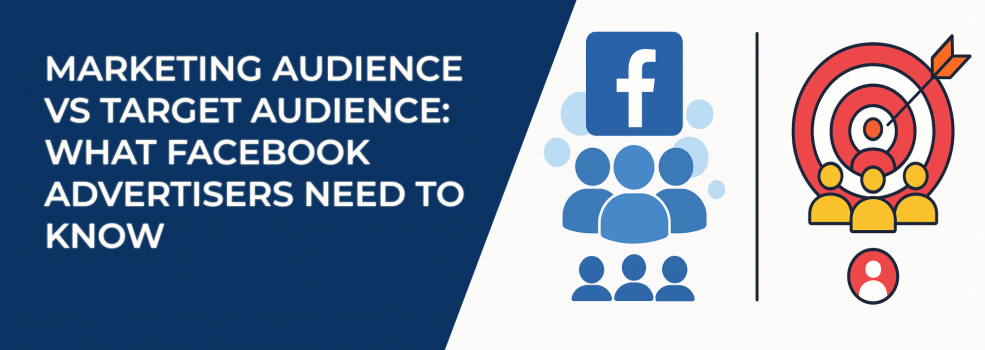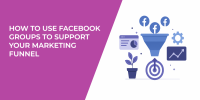When you launch a Facebook ad campaign, two words come up again and again: marketing audience and target audience. At first glance, they sound like the same thing. But in reality, they play different roles in how your ads reach people and how much return you see on your ad spend.
Understanding the difference isn’t just a matter of theory. It directly shapes how you plan, optimize, and measure your campaigns. So, what should Facebook advertisers know about these two concepts? Let’s break it down.
What Is a Marketing Audience?
A marketing audience is the broad group of people your brand could potentially reach. Think of it as the wide circle around your business. These people may not all be ready to buy, but they fit within the general profile of your potential customers.
For example, if you sell fitness equipment, your marketing audience could include:
-
People who follow fitness influencers.
-
Users who like pages about healthy eating.
-
Individuals in the 25–45 age range who engage with exercise-related content.
This wide net ensures you’re not leaving out people who may become interested later. Many of them won’t convert right away, but they build the pool from which you’ll eventually refine a target audience. Broad marketing audiences are ideal for creating brand awareness and warming up potential customers. If you’d like more depth on audience-building methods, see our article on How to Use Facebook Detailed Targeting to Reach Micro-Niche Audiences.
What Is a Target Audience?
A target audience, by contrast, is more specific. These are the people you’ve identified as highly relevant to your campaign goals. They’re not just interested in your industry — they’re likely to take the next step, whether that means clicking on an ad, signing up for a newsletter, or making a purchase.
Continuing with the fitness example, your target audience might be:
-
Men and women aged 30–40 who already bought gym memberships.
-
People who visited your website in the past 30 days.
-
Shoppers who added items to their cart but didn’t complete checkout.
See how focused this becomes? The smaller, sharper audience is where the conversion potential lies. You’re no longer spending money on people who are only casually curious. Instead, you’re directing ads to the group most likely to take immediate action. For more on refining these segments, check out Custom vs Lookalike Audiences: What Works Best for Facebook Campaigns?
Why the Distinction Matters for Facebook Advertisers
Many advertisers struggle because they treat both audiences the same. Casting a wide net with every campaign can drain your budget. Focusing too narrowly too soon can limit growth. Facebook advertising works best when you balance the two.
-
Marketing audiences build brand visibility. They create familiarity and generate traffic you can retarget later.
-
Target audiences drive conversions. They give you the best chance at achieving measurable ROI.
When you recognize that each type of audience plays a unique role, you can structure campaigns more effectively. This also helps you set the right expectations: not every ad should lead directly to sales, but every ad should move prospects further along the funnel. For more insights on adapting your strategy, see Facebook Ads Targeting Updates: How To Adapt in 2025.
Practical Tips for Using Both
1. Start Broad, Then Refine
When you launch a new campaign, begin with a marketing audience. Use Facebook’s interest targeting, lookalike audiences, or demographic filters. This helps you identify which segments respond. Then, use the performance data to narrow down.
That way, you’re not guessing who might respond — you’re letting real-world engagement guide you.
2. Retarget Based on Engagement
People who watch your video ads, visit your landing page, or interact with your posts are gold. Move them from the marketing audience bucket into your target audience. Retargeting ads can nudge them toward conversion.
This transition is crucial. By turning casual engagers into targeted prospects, you maximize the value of every impression and click. If you’re new to this, here’s a guide on How to Set Up Facebook Retargeting.
3. Separate Campaign Objectives
Don’t expect one campaign to do it all. Use marketing audiences for reach and awareness campaigns. Save target audiences for conversion-focused campaigns. This separation makes your reporting clearer and your optimization sharper.
If you blend objectives, it becomes hard to measure success. Keeping them separate ensures that each campaign has a clear purpose and a realistic benchmark.
4. Test and Compare
Curious about which approach works better for your brand? Run A/B tests. Compare cost per click and conversion rates between broad marketing audiences and tightly defined target audiences. The insights will surprise you.
Often, the results highlight opportunities you wouldn’t expect — like a broad audience delivering cheaper clicks, while a narrow audience delivers more expensive but higher-quality leads. Both sets of data matter.
Bringing It All Together
Think of your marketing audience as the foundation and your target audience as the precision tool. Both are necessary, but their value depends on how and when you use them. Facebook advertisers who understand this distinction don’t just save money — they scale smarter.
So, next time you plan your campaign, ask yourself: Am I aiming to spark attention or push for action? The answer can change the way you set budgets, write ad copy, and measure success. For a deeper dive into scaling strategies, you may also like The Science of Scaling Facebook Ads Without Killing Performance.

